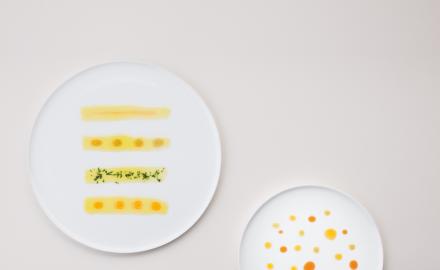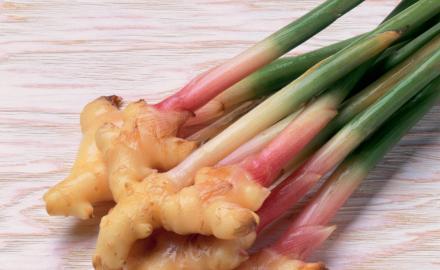The strawberry, the full-flavoured fruit par excellence
Origins
While the Romans used strawberries in cosmetic products due to their pleasant aroma, it was not until 1714 that they would conquer Europe and the rest of the world for their fl avour, thanks to a man with the predestined name “Frézier”. This botanist and French Navy offi cer, having completed a spying mission in South America, brought back with him large plants known as white strawberries from Chile, which were then crossbred with the aromatic Virginia strawberry plant with its small scarlet red fruits. The hybrid formed of this union was the origin of most of the 600 varieties of large strawberries that are grown today, the majority of which are cultivated in the United States and Europe, with the world annual strawberry production amounting to 4.5 million tonnes.
Strawberry varieties around the world
In the United States, the Californian variety Seascape, which is almost perfectly round, offers a pleasant bittersweet balance, while the Marshall with its brightly coloured flesh, created in 1900, is recognisable for its large prominent seeds.
While the Spanish strawberry Huelva is the most widely distributed in Europe, it is not the only one which offers incredible quality in terms of flavour.
France, for example, has four varieties which are used by chefs in their recipes:
- the Cigaline with its elongated shape and light wild strawberry flavour;
- the Ciflorette, an orangey-red variety of a conical shape which is considered as being a grand cru of strawberries, thanks to its delicious aromas;
- while the brick red Mara des bois, closely resembling wild strawberries, is certainly one of the most flavour some and fondant varieties.
- Lastly, the famous Gariguette is recognisable for its vermillion red shade, juicy flesh and extremely aromatic tangy flavour.
Morocco also has its fair share of beauties, with the Camarosa variety of a vibrant red colour and with its very tasty flesh. But that’s nothing compared to Algeria and its Russicade from Skikda, characterised by its strong aroma, abundance of juices and a total absence of acidity thanks to high level of sugar.
In addition to these plants there is the crunchy and pulpous Elsanta, of a ruby red colour, straight from the Netherlands, and the Royal Sovereign, which has enjoyed a solid reputation in England since the reign of Queen Victoria thanks to its rosy fl esh and tangy fl avour. And how could we forget the German heart-shaped variety, Tardive de Léopold, with its very sweet fl avour. As for Japan’s Hokowase and Ngoho, they are said to have an extraordinary taste.
While there are endless varieties of strawberries, the recipes using this fruit rich in vitamins A, B9 and C are just as luxurious.
So it’s hardly surprising that Gilles Marchal, pastry chef at the Maison du Chocolat in Paris, has dedicated a book to the fruit, simply called “Fraise” (strawberry), in which he reveals how to prepare it and vary the pleasures it offers. A specialist in the area, he admits to enjoying them whole and in a fresh coulis, with a very light vanilla cream, accompanied by a small scoop of natural pistachio icecream, or simply macerated for 2 hours in the fridge in a strawberry “wine”…
That said, he doesn’t hesitate to combine them with fresh bay leaves, pepper from Nepal or star anise from China to bring out their fl avour, not to mention using them in savoury dishes to accompany a fine strip of smoked pork belly or an old Comté cheese…
This passion for strawberries is shared by many chefs, one of which is Tom Colicchio, who set up the restaurant “Craft” in New York and swears by a recipe which combines strawberries, sugar and balsamic vinegar, “for an irresistible bitter-sweet sensation”, while everyone’s crazy about the “wild strawberry and poppy macaroons” devised by Jean-François Foucher, pastry chef at the restaurant of the Park Hyatt hotel in Paris.
As for the famous French chef Olivier Roelliger, a veritable purist in the matter, he insists on the fact of not putting them in the fridge, as this makes them lose their perfume, while heat actually makes their fl avour more intense.
Whether combined with spices or chocolate, cut up into pieces, combined with lemon, cooled, macerated, used in a vinaigrette or served with savoury or sweet dishes, there’s no doubt about it – strawberries are a true source of inspiration!


